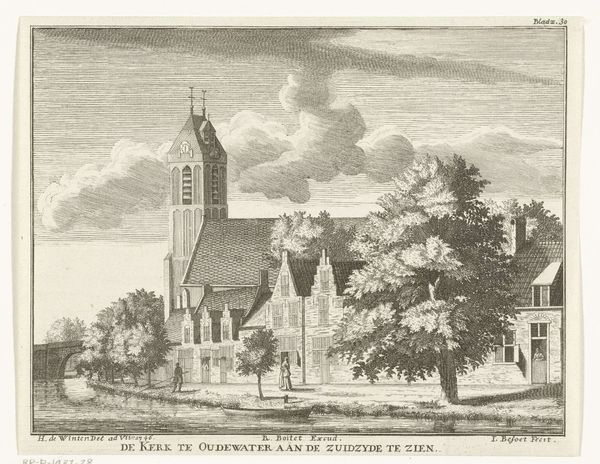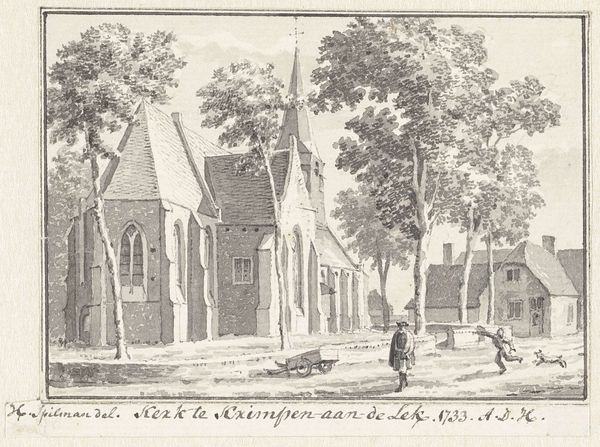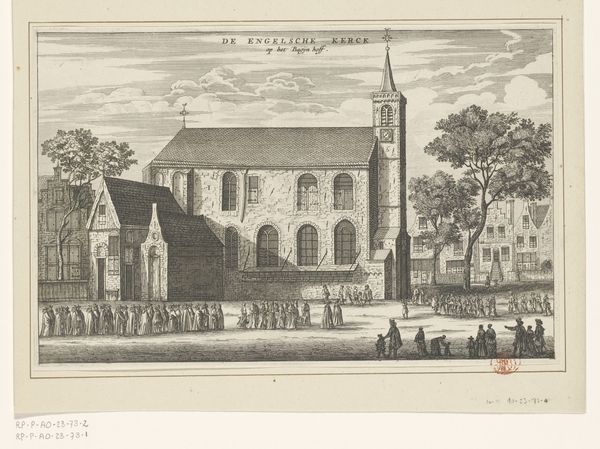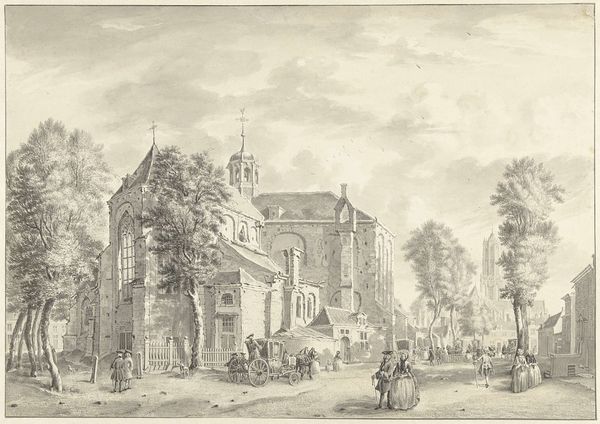
Dimensions: height 158 mm, width 214 mm
Copyright: Rijks Museum: Open Domain
Editor: So, this engraving by Willem Writs, made in 1763, is titled "Kerk en Rechthuis te Hilversum in 1762." It depicts a church and courthouse in a Dutch cityscape. I'm struck by the peacefulness, despite it being a formal public scene. What catches your eye? Curator: Immediately, I notice the visual pairing. The church, aspiring heavenward with its spire, versus the earthly domain of the courthouse. Churches have long stood as beacons representing spiritual authority. What does the proximity of the courthouse suggest to you about civic life at the time? Editor: Perhaps a blending of religious and secular law? The church keeping the state accountable, maybe? Curator: Precisely. Think about how justice and divine law were intertwined concepts. Even seemingly minor visual details can reinforce this. Do you notice how the light seems to emphasize the church, drawing our gaze upward, whereas the courthouse sits a bit more subdued? Editor: Yes, the church has a definite glow. Almost a blessing, or a watchful eye? Curator: The engraving's precision is fascinating, almost reverent. Each tree is meticulously rendered, each figure carefully placed. How do you feel this meticulous detail influences the viewer's perception of Hilversum? Does it project stability, order, perhaps even pride? Editor: Definitely a sense of civic pride. Like, "Look at our beautiful, orderly town." I hadn’t thought about it that way. Thanks! Curator: And thank you. Engaging with art like this encourages us to understand that visual symbols often bridge individual beliefs and collective values. They serve as anchors to cultural memory, giving silent testimony to evolving ideologies across time.
Comments
No comments
Be the first to comment and join the conversation on the ultimate creative platform.













